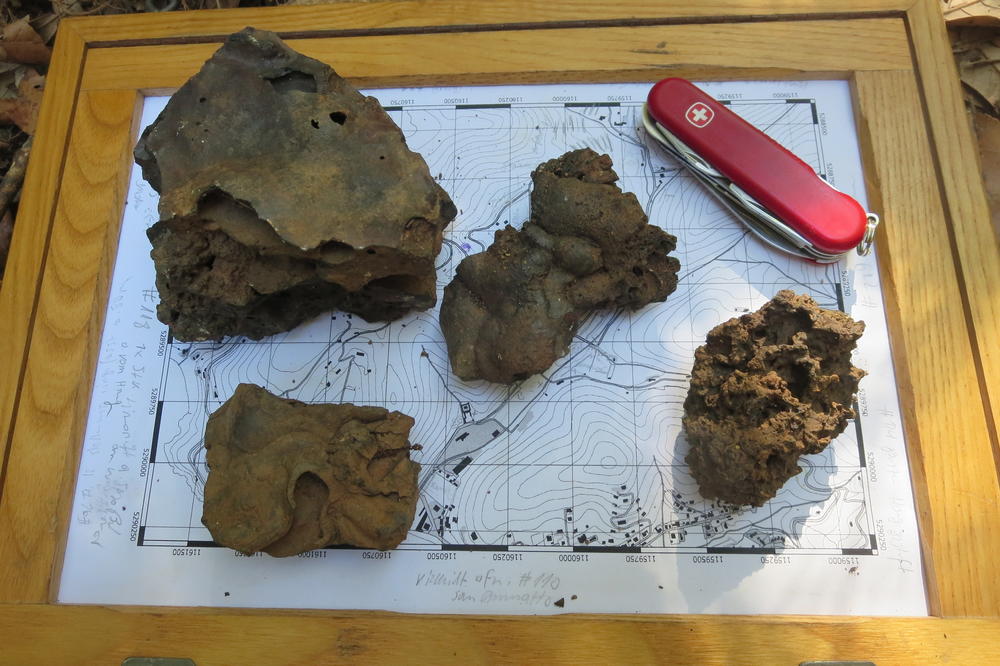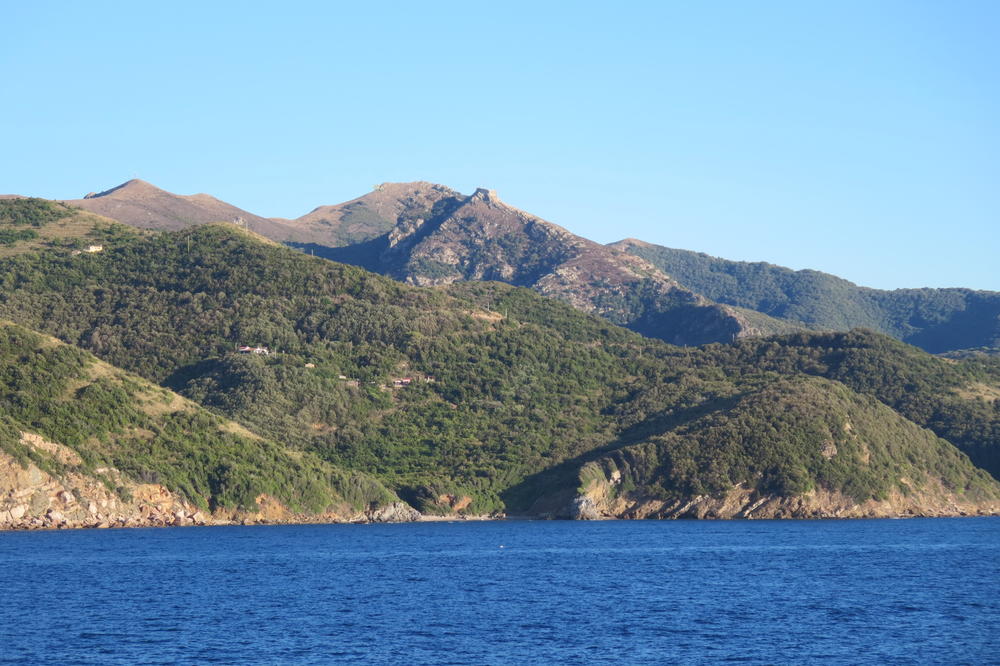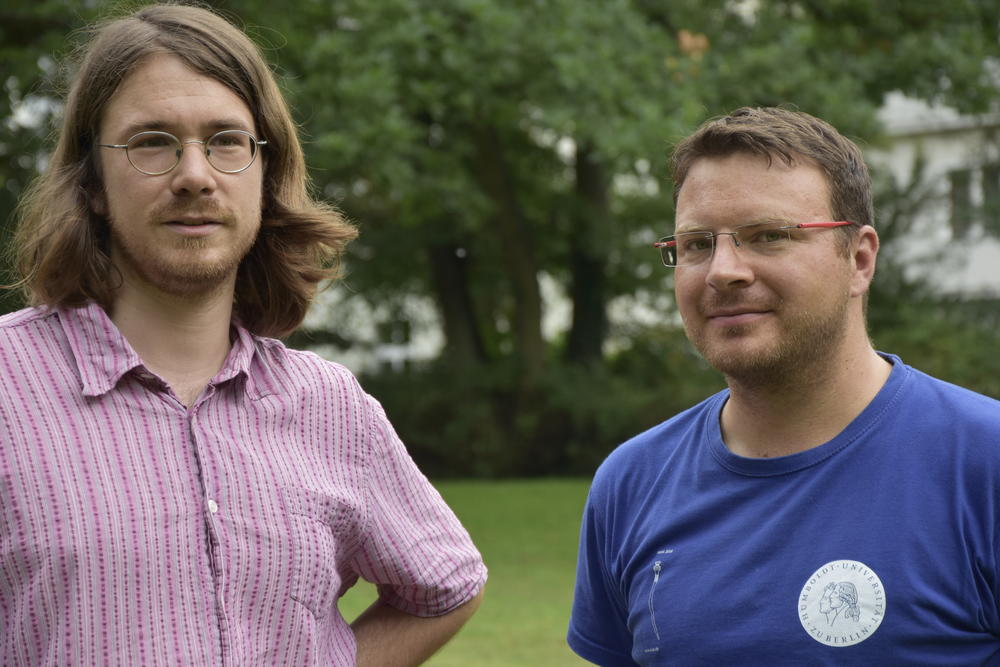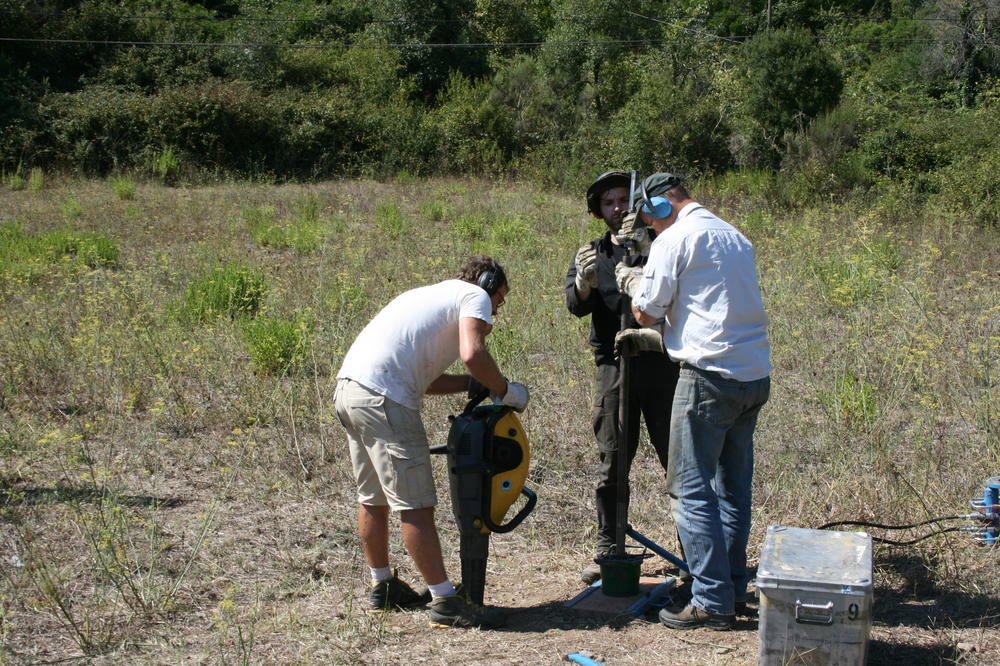The Industrial Heartland of Ancient Civilization
Archaeologist Raphael Eser and geographer Fabian Becker are collaborating on a study on ancient iron smelting on the Tuscan island Elba for their doctorates at the Berlin Graduate School of Ancient Studies.
Dec 07, 2017
More than 2000 years ago, smoke billowed from the smelting ovens used to extract iron on Mediterranean islands. Archaeological finds, the special vegetation, and large quantities of smelting residue – known as slag – bear witness until this day to an ancient industrial era from which Elba earned the epithet Aithalia, or “the smoking one.” With the aid of soil samples and the latest dating methods, the geographer Fabian Becker from Freie Universität Berlin and the classical archaeologist Raphael Eser from Humboldt-Universität zu Berlin are investigating these traces of the past. For their joint project, which links both their doctoral theses, they want to find out the methods used to produce the coveted raw material and what was made from it on the Tuscan island in antiquity.
Today the Mediterranean island of Elba is a popular destination for tourists.
Image Credit: Fabian Becker
The team of doctoral researchers met at the Berlin Graduate School of Ancient Studies (BerGSAS), which is jointly funded and organized by both Humboldt-Universität and Freie Universität, and associated with the Berliner Antike-Kolleg. The young researchers, both doctoral researchers in the school, have received funding from the Excellence Cluster Topoi and are contributing to a research project on the production of iron in antiquity as part of the program Landscape Archaeology and Architecture. The researchers are exploring Elba together, examining finds and soil samples using archaeological and geoscientific methods. While Raphael Eser is working on a monograph on cultural life around ancient iron smelting, Fabian Becker’s thesis, which is being published as several essays, consolidates knowledge on the historical environment on Elba. “So far, I’ve learned from Raphael how shards are dated, to give one example,” declares the geoscientist. In exchange, Raphael Eser is now able to discern significant features of the terrain in the area under investigation and to identify sites where it is worth taking a sample with a drill-like tool. Becker is convinced that “The collaboration enhances the quality and disciplinary depth of our work. We’re learning from one another, and the interdisciplinary exchange often encourages us to question our conclusions.”
Among other questions, the research team is also looking for some answers to the length of time and location, as well as the methods and materials used for smelting on Elba. “Elba is located just a few kilometers from the Italian mainland, which means it was not far from Populonia, the industrial center at the time,” explains Raphael Eser. “One could say that Populonia was the industrial heartland of ancient civilization. Around two million tons of iron ore were smelted there within a period of 700 years. A large part of it very probably came from Elba.” Up until now, researchers have assumed that ore mining and iron smelting on Elba stopped roughly 2000 years ago, and the island consequently lost its status as a supplier of iron. They suspect that this was due to an environmental crisis. “To smelt, you need wood. The established theory is that the island’s entire tree population had been felled, making smelting impossible,” Eser illustrates.
It is precisely this theory that the researchers want to disprove in their theses. “One of our most important research questions is whether the environment did in fact change so dramatically in that period,” says Fabian Becker. There are estimates of the quantity of ore smelted in antiquity. “When you look at those figures, you realize that, for that quantity, you wouldn’t need so much wood that you would have had to fell all the trees on the island.” Eser and Becker are convinced that they can challenge previous assumptions about the chronology of the island’s industrial history and smelting beyond the birth of Christ with their analyses.
The researchers use special drills to extract slag from depths up to eleven meters.
Image Credit: Fabian Becker
To substantiate their theses, the researchers are quarrying for and documenting different types of slag by using augers at promising sites. According to Becker, they are able to verify that ores were processed in different areas of the island, based on the different geochemical characteristics of the sediments which the researchers extract from depths of up to eleven meters using a special drill. Examining slag also enables them to reconstruct different smelting methods. “From other regions, we know that smelting methods changed over time. Now, we want to find out how those changes can be observed on Elba,” says Fabian Becker.
“It would be fantastic if we were able to reconstruct the chronology of events and with it the geographical changes over the course of time,” says Eser. If smelting did indeed continue for a longer period of time, it would have had an influence on the entire ancient economic area during the Roman Empire.
“Our goal is to reach a coherent picture of how people and the environment interacted with each other during that period and which processes shaped the landscape on Elba making it what it is today,” adds Becker. The doctoral researchers say that their joint research could significantly advance research as their work could provide a broader basis for interpretations that extends beyond the surviving textual sources and allows researchers to answer the question of what happened in the Mediterranean Basin more than 2000 years ago.
Further Information
The Berlin Graduate School of Ancient Studies is jointly funded and organized by both Freie Universität Berlin and Humboldt-Universität zu Berlin, accredited at both the Dahlem Research School and the Humboldt Graduate School and associated with the Berliner Antike-Kolleg. In addition to the two universities, with the Berlin-Brandenburg Academy of Sciences and Humanities, the German Archaeological Institute, the Max Planck Institute for the History of Science and the Stiftung Preußischer Kulturbesitz, four nonuniversity facilities are also involved. The BerGSAS currently offers five different doctoral programs, which take into account the requirements of the respective disciplines and simultaneously respond to the growing need for interdisciplinarity. The school’s excellent international networks and cooperation with globally renowned institutions in the field of ancient studies enable doctoral candidates to undertake residencies abroad and to organize joint conferences with partner institutions.




